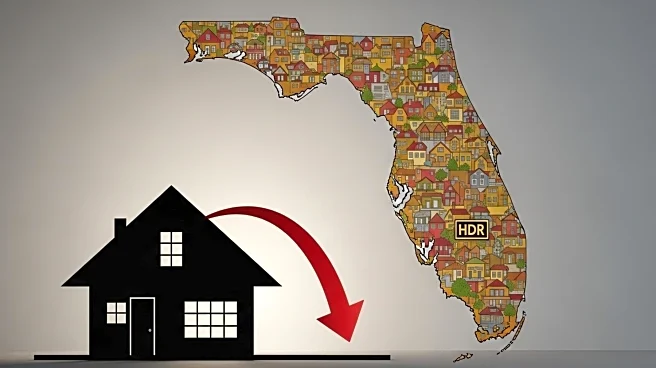What's Happening?
Recent data from Realtor.com indicates a decline in home sale prices in Shasta County, California, with the median price dropping from $370,500 in June to $360,000 in July, marking a 2.8% decrease. This
trend is part of a broader pattern across California, where single-family home prices fell slightly from $769,961 in June to $764,195 in July. Despite this decline, the sales price of condominiums and townhomes increased significantly, with a 143.3% rise in July to a median of $862,500 from $354,500 in June. The total value of recorded residential home sales in California decreased by 48.5% from $115.1 billion in June to $59.3 billion in July.
Why It's Important?
The fluctuation in home prices and sales values in California reflects broader economic uncertainties impacting the real estate market. The decrease in single-family home prices may indicate a cooling market, potentially affecting homeowners and investors. Conversely, the sharp increase in condominium and townhome prices suggests a shift in buyer preferences or market dynamics. These changes could influence housing affordability and investment strategies, impacting economic stakeholders such as real estate developers, investors, and potential homebuyers.
What's Next?
As the real estate market continues to adjust, stakeholders may need to reassess their strategies. Potential buyers might find opportunities in the declining single-family home prices, while sellers may need to navigate the competitive market for condominiums and townhomes. Real estate developers and investors will likely monitor these trends closely to adapt to changing market conditions. Additionally, policymakers may consider interventions to address housing affordability and support economic stability.
Beyond the Headlines
The shifts in the real estate market may have deeper implications for urban planning and community development. As preferences for different types of housing evolve, cities may need to adjust infrastructure and services to accommodate changing demographics and housing needs. This could lead to long-term changes in how communities are structured and how resources are allocated.











